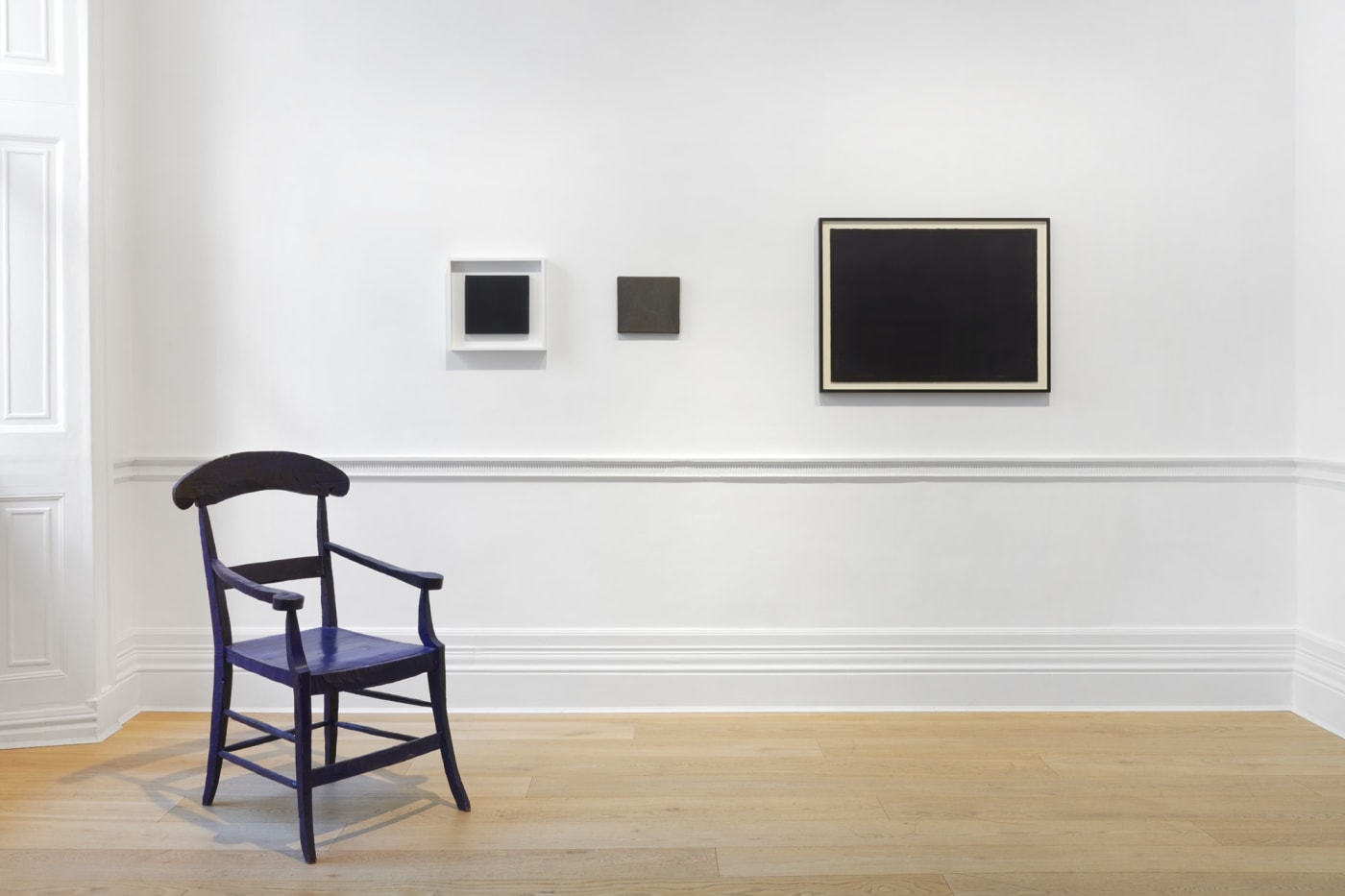Considered amongst the founders of British Minimalism, Bob Law's work defies easy categorisation and ranges across drawing, painting and sculpture that retains a firm yet always uneasy embrace of pure abstraction. As opposed to the New York-based minimalist artists, Law's practice drew on his engagement with the English landscape and his esoteric range of interests. He produced his 'Field' drawings between the late 1950s and early 1960s in the Cornish landscape of St. Ives. Capturing his experience and drawn while lying on his back, their elemental forms and traditional symbols would set the basis for his work to come. Interests in philosophy, mysticism, alchemy and palaeontology combined with his drive for the reductively essential materialised in the radically monochromatic black canvases that he is most famous for. Rarely ever purely black, these works modulate from blue, to violet and defy photographic reproduction.
Law gained notoriety in the early 1970s, with works such as Mister Paranoia IV 20.11.70 (No. 95) and Drawing (Black Scribble) 10.2.72. These works, considered as the elemental synthesis of his 'Field' drawings, were radically reductive yet far from empty of meaning. With a return to sculpture in the early 1980s, initially cast iron and bronze followed by painted wood, Law continued to develop an imaginary visually distinct from his abstract works, harking back to his early experiments with carpentry. The chair became part of Law's sculptural repertoire: originally conceived while meditating in front of his black paintings, these playful and anthropomorphic sculptures-the same anthropomorphism is also visible in sculptures such as Young Obelisk (1981) and Reclining Obelisk (1984)-summarised Law's constant search to perceive space and how we each fit in relation to it. Drawing on earlier experiments from the 1970s, in the 90s Law starts his colourful 'Castle Paintings' series, followed by a second return to bronze sculpture in the last years of his life.
Championed by the critic Lawrence Alloway, whom he met while in Cornwall, Bob Law exhibited with Peter Hobbs in 'Two Young British Painters', ICA | Institute of Contemporary Art, London (1960). There followed one-man shows at some of the most prestigious galleries across Europe, including Konrad Fischer, Dusseldorf (1970) and the increasingly influential Lisson Gallery, London (1971). Later in the decade he had two major solo exhibitions: '10 Black Paintings 1965-70', Museum of Modern Art, Oxford, UK (1974) and the retrospective 'Bob Law: Paintings and Drawings 1959-1978' at the Whitechapel Gallery, London, UK curated by Nicholas Serota (1978). Recent group exhibitions include 'Assorted Paper', The Sunday Painter, London, UK (2017); 'Artists and Poets' at Secession, Vienna, Austria (2015); 'Abstract Drawing', curated by Richard Deacon, Drawing Room, London, UK (2014); 'A House of Leaves', curated by Vincent Honoré, at DRAF, London, UK (2013); 'Bob Law: Drawings, Sculpture and Paintings', Newlyn Art Gallery, Cornwall, UK, which travelled to Kettle's Yard, Cambridge, UK (1999); His work is included in numerous private and public collections throughout the world, including Tate, London, UK; the British Museum, London, UK; The Guggenheim Museum, New York, NY; the Stedelijk Museum, Amsterdam; the Art Gallery of New South Wales, Sydney; Museum Sztuki, Lodz, Poland; and the Panza Collection, Varese, Italy, amongst others.

